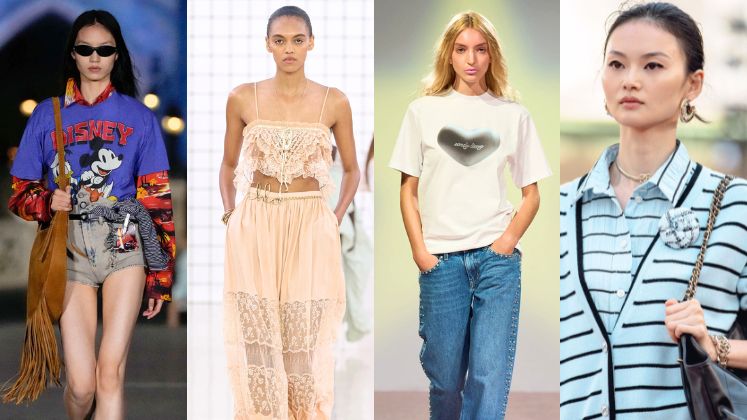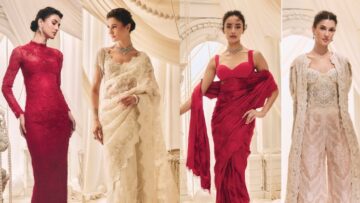As fashion continues to evolve, secondhand markets are increasingly being shaped by the latest runway trends, with consumers turning to resale platforms to capture the styles they admire on high-fashion stages. Fashion Weeks now serve as catalysts, driving demand for vintage and archival pieces that echo what’s seen on models and celebrities.
This season, we are witnessing a heightened interest in secondhand pieces that are inspired by runway highlights— from nostalgic Disney tees and retro ’90s silhouettes to timeless Prada archives and vintage-inspired lacy lingerie.
For designers, brands and manufacturers, this means a new opportunity to understand the heightened interest surrounding runway-inspired secondhand items and incorporating elements that resonate with today’s resale-savvy shoppers. By creating pieces that blend nostalgia with modernity and investing in quality, they can not only appeal to immediate buyers but also ensure their designs hold long-term value in the evolving resale economy. As we explore each of these trends, we also uncover insights to help industry players craft collections that resonate with both contemporary and vintage fashion consumers alike. Read on to discover!
’90S T-SHIRTS WITH A MODERN TWIST
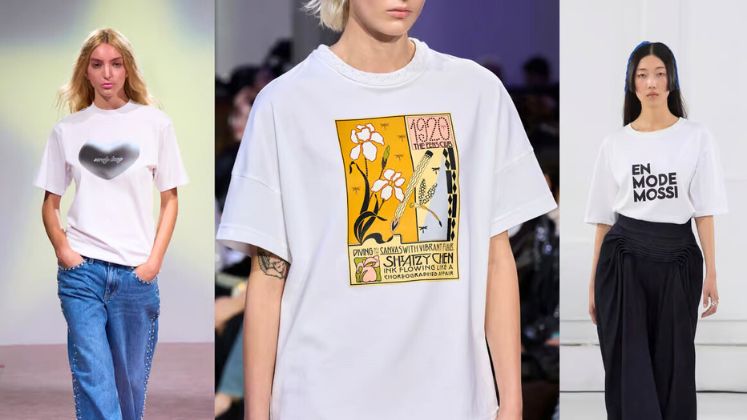
The resurgence of ’90s fashion is fuelling great interest in vintage style T-shirts, as has also been noticed at brands like Rabanne, Totem, Shiatzy Chen and Sandy Liang on recent runway showcases. These T-shirts— characterised by short sleeves, round necklines and often oversized silhouettes— are expected to be highly sought after in the secondhand market. Key elements like heavyweight cotton fabrics, bold graphics and iconic logos underscore the appeal, making these pieces ideal for collectors and style-savvy consumers alike.
For brands looking to leverage this trend, designing retroinspired T-shirts that capture the authenticity of ’90s fashion while adding fresh, contemporary touches will ace the trend. Heavyweight cotton or structured knits can replicate the era’s iconic silhouettes, enhancing the garment’s tactile appeal.
Graphic design is crucial here. Explore logo-centric or sloganbased prints and consider collaborating with artists who specialise in retro aesthetics for exclusive graphics. Furthermore, using eco-friendly or upcycled fabrics can resonate with younger consumers who value both sustainability and nostalgia.
VINTAGE DISNEY T-SHIRTS
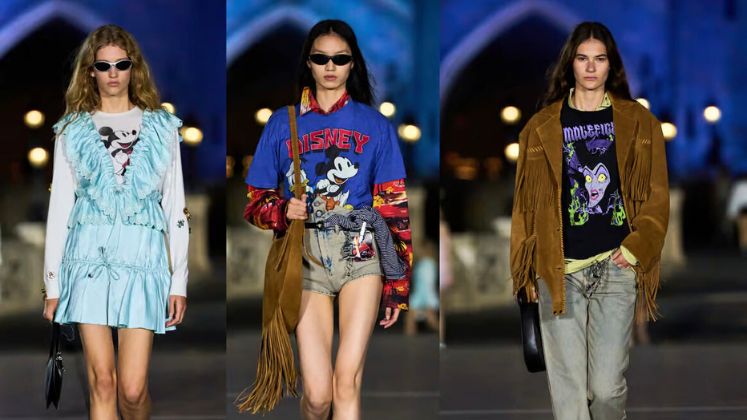
As noticed on Coperni’s S/S ’25 show at Disneyland Paris, the nostalgic vibe of Disney is having its moment in high fashion, bridging runway glam with mainstream appeal. Vintage Disney T-shirts—featuring iconic characters such as Mickey Mouse and aquatic-themed imagery, were highlighted as prized, genuine vintage finds. This renewed focus on Disney’s classic visuals has energised resale platforms, where these nostalgic items are sought after by fans and collectors alike. For designers and brands, tapping into this trend means creating pieces that balance vintage charm with contemporary appeal. Consider incorporating playful, recognisable motifs in your collections or collaborating with Disney on limited-edition prints to capture the same consumer interest.
Manufacturers and suppliers can focus on sourcing high-quality, durable fabrics for screen-printing or embroidering nostalgic graphic prints, ensuring that pieces meet modern quality standards while exuding vintage character.
Additionally, past luxury collaborations such as Disney’s with Gucci, Givenchy and Stella McCartney, serve as a good reference point to develop elevated pieces that cater to a high-end market while holding nostalgic value. For those aiming to capture the attention of the younger demographic, experimenting with eco-friendly materials or using vintage-inspired washes and treatments could enhance the appeal, aligning with both sustainability trends and the growing demand for unique, collectible items.
SAINT LAURENT BLAZERS AND ARCHIVE PIECES: A REVIVAL OF TIMELESS ANDROGYNY
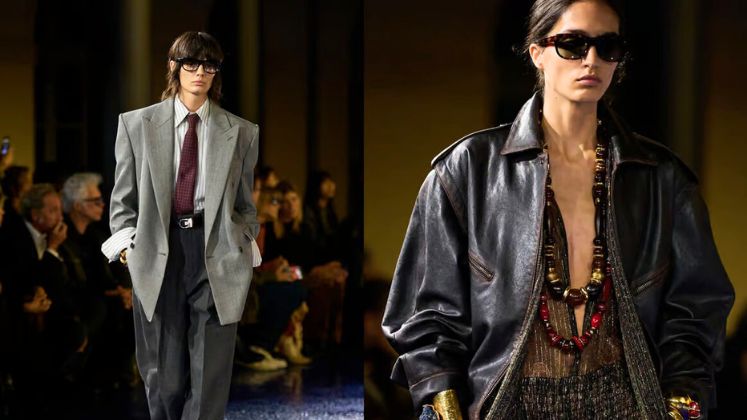
Anthony Vaccarello’s S/S ’25 collection for Saint Laurent masterfully revives the brand’s iconic, powerful silhouettes, affirming its continued dominance in the secondhand market. With an emphasis on androgynous styling underscored by supermodel Bella Hadid’s return to the runway in an oversized blazer, the collection has reignited interest in Saint Laurent’s timeless archive pieces, particularly leather jackets and blazers.
Reinterpreting the iconic blazer with exaggerated proportions, structured shoulders and refined tailoring will create pieces that resonate with the brand’s legacy of feminine power and sophistication. Consider incorporating design elements inspired by the archives, such as wide lapels or doublebreasted fronts, to evoke the iconic ’70s and ’80s styles.
Manufacturers should focus on sourcing durable materials like leather and wool blends, which not only contribute to the longevity and resale appeal of each piece but also align with the current consumer demand for investment items. For retailers, emphasising on archival-inspired designs can attract consumers who seek pieces with staying power. Collaborations or limited-edition releases that reference specific eras from Saint Laurent’s history can further elevate interest, making these items coveted additions for both primary buyers and secondhand collectors.
RABANNE’S 1969 BAG: ICONIC LUXURY WITH RESALE POTENTIAL
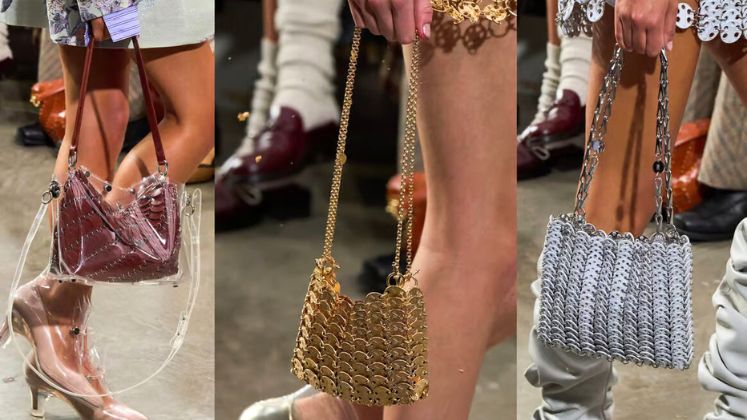
Rabanne’s S/S ’25 presentation redefined luxury with a reissue of the iconic 1969 bag in collaboration with jeweller Arthus Bertrand, being hailed as ‘the world’s most expensive bag’. This opulent gold edition of the bag shines a spotlight on earlier versions of the 1969 bag, especially in metallic finishes, creating high resale demand among collectors and luxury aficionados.
For brands, this resurgence signals an opportunity to embrace statement-making accessories with a vintage influence, particularly in metallic gold and silver tones. Consider designing high-quality, metallic pieces that echo Rabanne’s iconic chainmail style, exploring materials like stainless steel or brass for durability and luxurious appeal.
Manufacturers could focus on innovative metal treatments to capture the vintage essence of the original while maintaining affordability and durability for new buyers. For retailers and suppliers, highlighting such items with refined craftsmanship or offering customisation options can enhance perceived value, appealing to resale and investment-focused consumers. Drawing on Rabanne’s collaboration model, consider strategic partnerships with other designers or artists to create collectible capsule pieces that add a modern twist to iconic silhouettes.
PRADA ARCHIVES
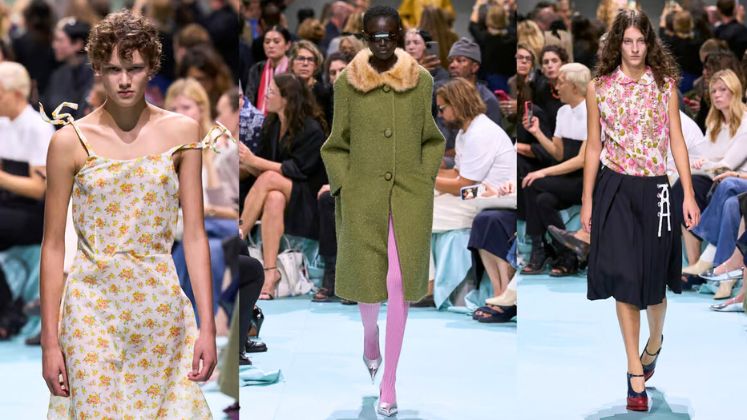
Prada’s S/S ’25 collection, led by Miuccia Prada and Raf Simons, embraces the essence of individual style— a nod to today’s Vinted-driven, thriftsavvy culture. With pieces seemingly curated from Prada’s archives, the collection creates a harmonious yet eclectic narrative that celebrates unique, timeless fashion. This runway emphasis is likely to drive demand for vintage Prada on secondhand platforms, where collectors and style enthusiasts seek authentic archive pieces.
Brands can consider designing their collections that honour their own brand’s heritage through a fresh, modern lens. Creating pieces inspired by iconic past styles or reimagining archived designs with contemporary updates can resonate with consumers who value history in fashion. For example, experimenting with signature materials, patterns and silhouettes that recall past collections can attract the nostalgia-driven buyer while providing a modern edge.
Retailers can promote this concept by framing collections as timeless investments, perhaps with storytelling elements that highlight the brand’s journey or specific past inspirations. By incorporating archive-inspired designs into the product mix, brands can cater to a secondhand-oriented market and offer pieces that not only speak of individualism but also retain value over time, appealing to both first-time buyers and resale enthusiasts.
LACY LINGERIE
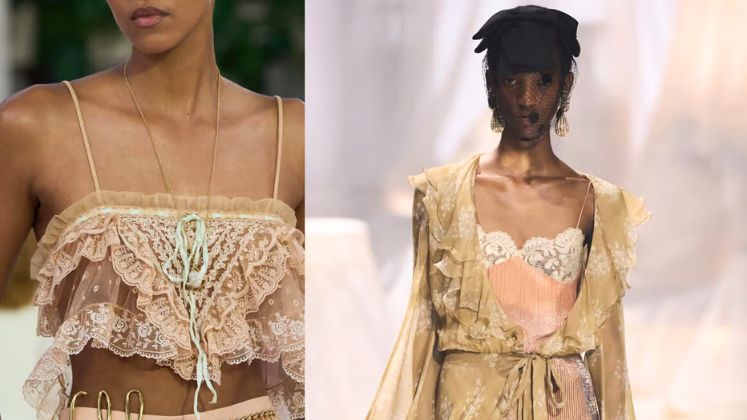
Lacy lingerie makes a powerful return, with brands like Gucci and Chloé bringing fine lace details and vintage-inspired charm to the fashion forefront. This season’s delicate camisoles, negligees and shorties offer versatility, designed not only as intimate wear but also as stylish layering pieces for daytime looks. The growing interest in these items as vintage finds on secondhand platforms underscores a demand for luxurious yet wearable lingerie that exudes retro elegance.
For designers, this trend presents an opportunity to blend sensuality with functionality, crafting lingerie pieces that transition seamlessly from private to public spaces. Incorporate high-quality lace and silk fabrics, as these materials elevate the piece’s aesthetic and tactile appeal, making them desirable both as new purchases and eventual resale items. Subtle design details like scalloped edges, intricate lace patterns and soft colour palettes enhance the vintage feel.
Manufacturers need to emphasise craftsmanship and durability, ensuring that each piece withstands daily wear and remains relevant over time. For retailers, consider positioning these lingerie items as versatile wardrobe staples, ideal for layering under blazers or pairing with highwaisted skirts.
THE CARDIGAN: NOSTALGIC COMFORT MEETS MODERN DEMAND
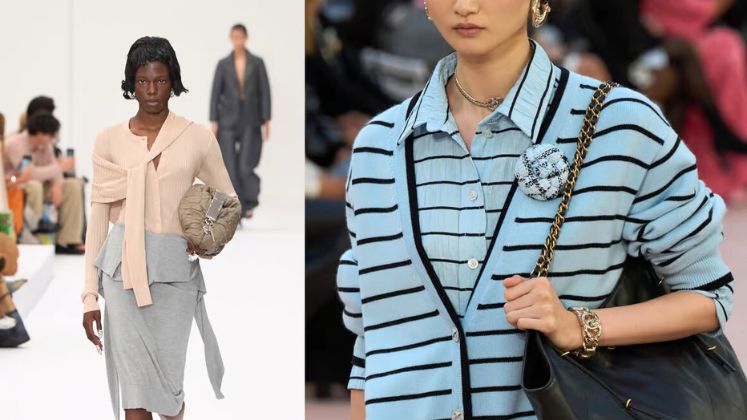
This season, the cardigan has solidified its place in fashion as more than just a wardrobe staple, gaining renewed prominence on runways from Chanel to Acne Studios. With its cozy, nostalgic charm, this versatile piece is experiencing a resurgence in the secondhand market, especially in premium materials such as wool and cashmere.
For designers and brands, this trend offers an opportunity to elevate the cardigan from a basic layering piece to a statement piece that mirrors quality and craftsmanship. Focus on using luxurious fibres such as merino wool, cashmere or alpaca, which not only enhance comfort but also increase the item’s value for potential resale. Additionally, experimenting with modern yet subtle details such as oversized fits, textured knits and unique closures to make the cardigan a standout piece while maintaining its classic appeal, works to accentuate this trend.
Manufacturers should consider sourcing eco-friendly, sustainable yarns that add relevance to environmentally conscious consumers, a key demographic in the resale market. Retailers can market these cardigans as investment pieces, emphasising their longevity and timelessness. Offering limited edition styles or collaborating with heritage artisans on unique knit patterns could further differentiate these pieces, making them even more attractive to consumers seeking distinctive, collectible items with lasting value.

